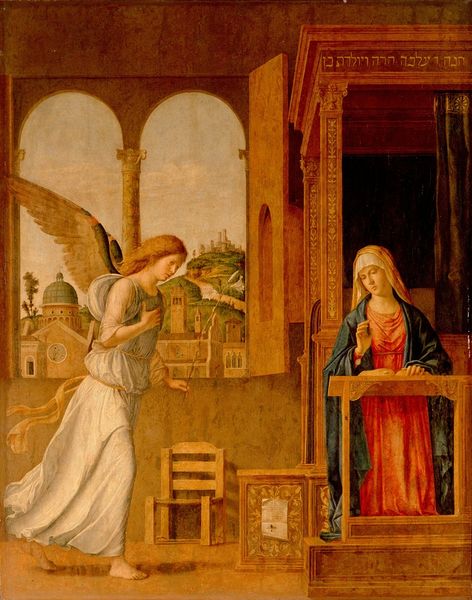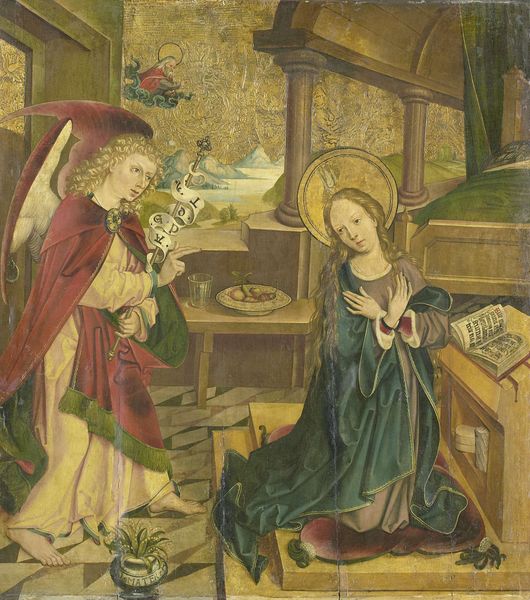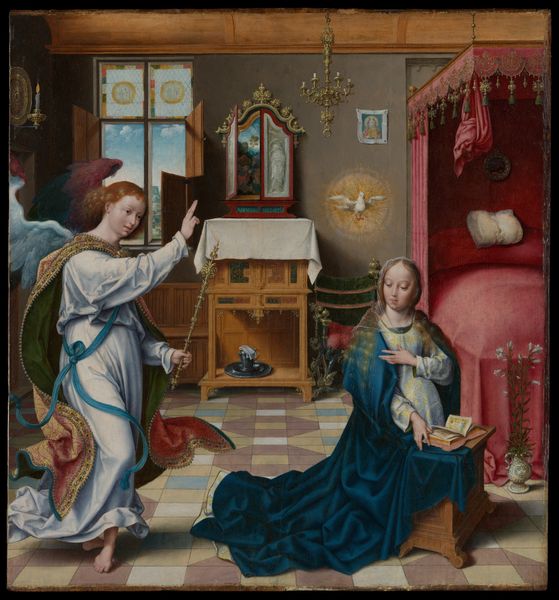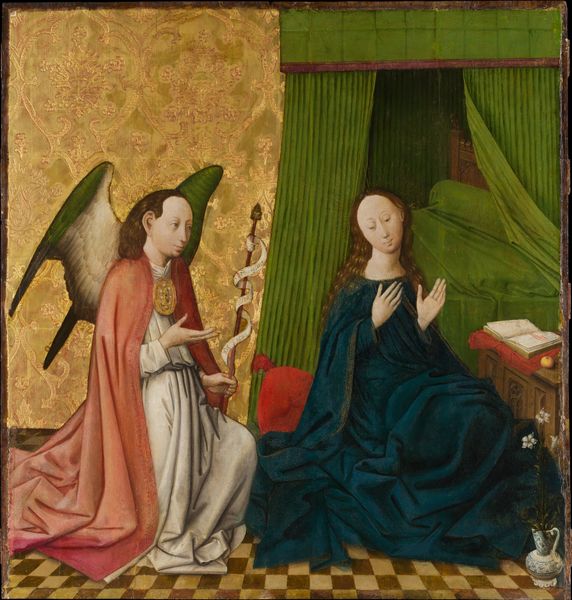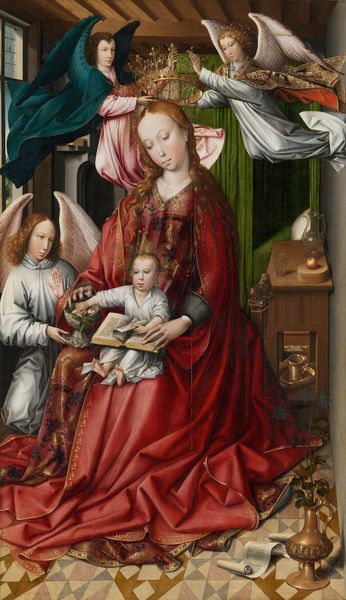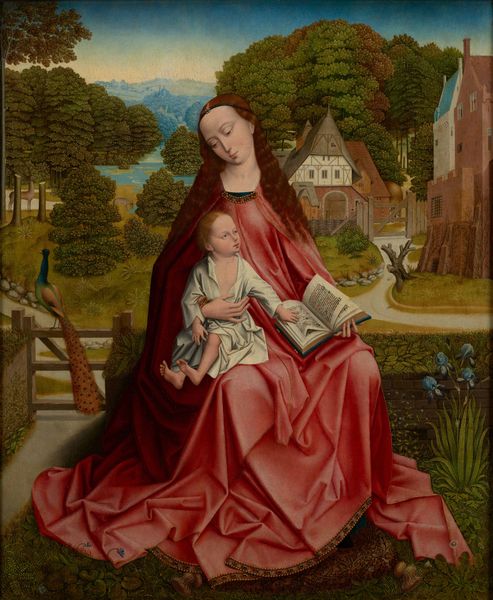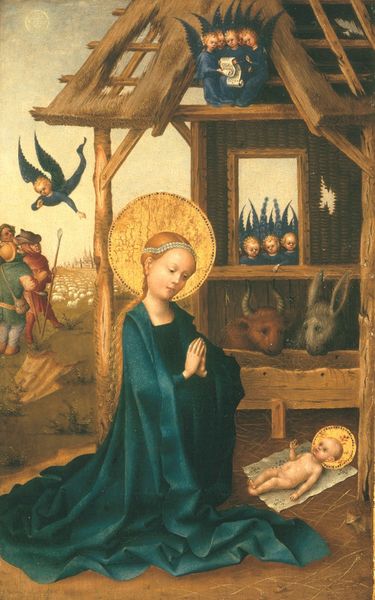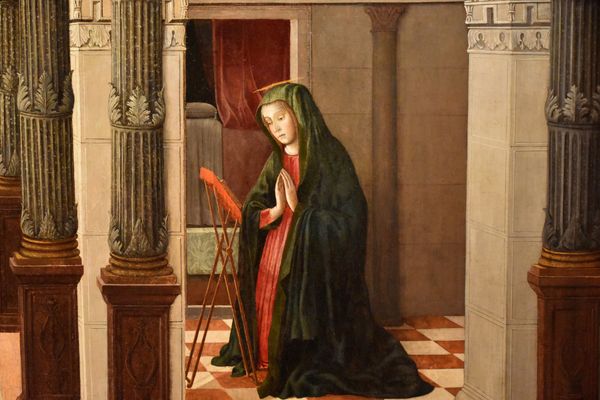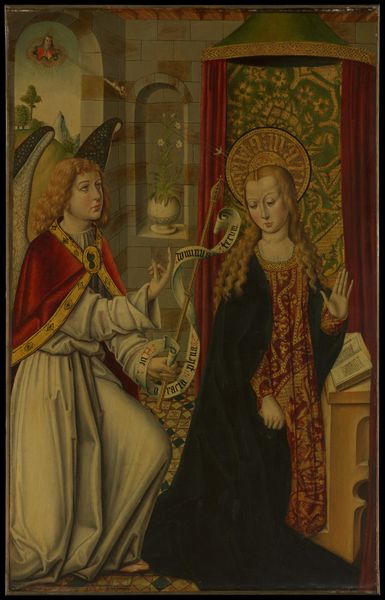
panel, oil-paint, fresco
#
portrait
#
panel
#
oil-paint
#
figuration
#
fresco
#
oil painting
#
history-painting
#
italian-renaissance
Dimensions: painted surface: 110.2 x 78.4 cm (43 3/8 x 30 7/8 in.) overall (panel): 110.2 x 81 cm (43 3/8 x 31 7/8 in.) framed: 130.2 x 99 x 10.7 cm (51 1/4 x 39 x 4 3/16 in.)
Copyright: National Gallery of Art: CC0 1.0
Curator: Here we have Juan de Flandes’s “The Annunciation,” dating from around 1508 to 1519, rendered in oil paint on panel. Editor: Immediately, the symbolic weight is palpable. The dove, the lilies…it feels incredibly deliberate, carefully considered. There’s a powerful stillness despite the dramatic subject. Curator: The piece invites reflection on the intersection of divine intervention and female agency within a patriarchal context. Consider Mary's downcast gaze and the societal pressures upon women of the period to comply with prescribed roles. Editor: Precisely. And the symbols work on multiple levels. The dove isn't just the Holy Spirit; it’s a representation of purity, a powerful cultural emblem with layers of meaning about sacrifice, peace, and in this instance, a destiny she has yet to choose. Curator: And we can read Mary’s gesture, book in hand, as a sign of knowledge and literacy, subtly challenging the historical narratives of female intellectual inferiority often circulated during the Renaissance. It encourages a dialogue about empowerment versus the constrained choices presented to her. Editor: It's also worth noticing how Flandes places her in an interior space – a domestic setting becoming the site of divine communication. It’s an elevation of the feminine sphere, turning what was typically marginalized into a stage for history-altering events. Curator: Precisely, and from a critical perspective, that act of framing is what demands analysis, it invites us to investigate whose agency and voices become centered and marginalized when a scene like the Annunciation, so core to religious belief and practice, is represented through specific aesthetic and cultural lenses. Editor: The more I look, the more it becomes about not just faith, but about a radical change within a very familiar visual language, still using the language itself. Curator: A critical investigation and deeper reflection. We gain a much more nuanced understanding of the sociopolitical contexts that shaped its creation and continues to impact its reception. Editor: And about recognizing the power latent in these images which keeps evolving along with its interpretations.
Comments
No comments
Be the first to comment and join the conversation on the ultimate creative platform.
